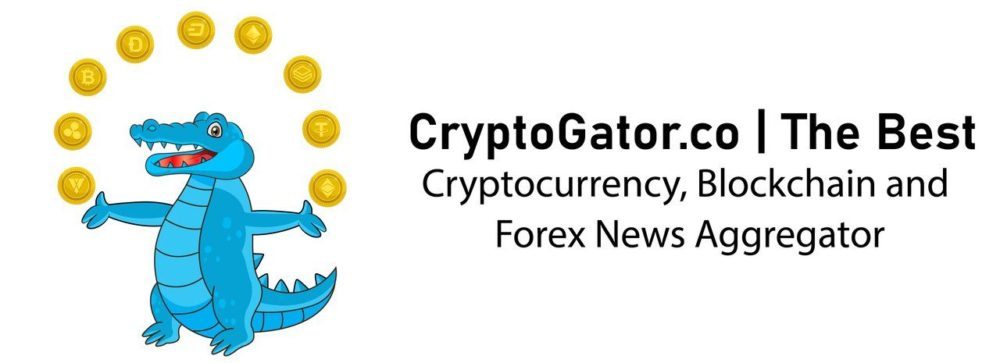A Simplified Guide To Forex Trading
Here at CryptoGator, we make an emphasis on Crypto Education and keeping our readers informed about the financial world. The foreign exchange market commonly known as Forex market is a […]
 Crypto Gator | The Best Cryptocurrency, Blockchain and Forex News Aggregator
Crypto Gator | The Best Cryptocurrency, Blockchain and Forex News Aggregator
The Best Cryptocurrency, Blockchain and Forex News Aggregator
Here at CryptoGator, we make an emphasis on Crypto Education and keeping our readers informed about the financial world. The foreign exchange market commonly known as Forex market is a […]

Here at CryptoGator, we make an emphasis on Crypto Education and keeping our readers informed about the financial world.
The foreign exchange market commonly known as Forex market is a place where currencies are traded (buying and selling). Usually, when people move around the world, there is a need to exchange currencies to be able to conduct business activities within their host country. This process of currency exchange is termed a foreign exchange transaction and is mainly conducted in the foreign exchange market.
One factor that makes the forex market spectacular is that there is no central marketplace for trading currencies. They are rather traded electronically or carried out over-the-counter (OTC). Traders carry out all transactions through the computer network rather than a centralized exchange.
The Forex market is open for trading 24 hours a day, Monday to Friday with currencies traded worldwide in the major financial centers of London, Hong Kong, Singapore, New York, Paris, Tokyo, Zurich, Frankfurt, Sydney, and across almost every time zone.
The implication is that the end of a trading day in the United States is the start of a trading day in Hong Kong and Tokyo. The forex market remains extremely active any time of the day with constantly changing price quotes.
In practice, many factors can contribute to causing a change in currency prices in the FX market. As long as these factors remain crucial to the movement of the market, traders are on the lookout for these factors when making trading decisions.
These factors border around macroeconomic events such as the election of a new president, or some other economic factors such as the prevailing interest rate, unemployment, GDP, the debt to GDP ratio and inflation, etc. Most top traders adopt an economic calendar to stay at the top of things concerning important economic releases that can move the market.
Anyone trading the FX market would basically fall into two categories: the Hedgers and the Speculators. While these two categories of traders remain essential to the market, their role, significance, and purpose of trading the market remain distinct from one another.
The Hedgers are always looking to mitigate extreme movements in the exchange rate. This strategy is employed by large conglomerates like Total, Dangote, and Amazon who look to reduce their exposure to foreign currency movements.
On the flip side, Speculators are risk-seeking and always looking to take advantage of the volatility in exchange rates for some decent gains. These categories of traders include large trading desks at the big banks and retail traders.
Base currency: When quoting a currency pair, this is the first currency that appears. Looking at EUR/USD, the base currency is the Euro.
Variable/quote currency: This is the second currency in the quoted currency pair. In the case of EUR/USD, it is the US Dollar.
Bid: The Bid price is the highest price a buyer (the bidder) can pay. This is the price you will see when you are trying to sell a forex pair, usually to the left of the quotation and most times in red.
Ask: This is the reverse of the a Bid order and shows the lowest offer a vendor is prepared to pay. This is the price you can see when you are trying to buy a currency pair, and it is normally to the right and in blue.
Spread: This is the disparity between the bid and the offer price, which is the real spread in the underlying forex market, plus the broker’s additional spread.
Leverage: Leverage makes it easier for traders to trade positions by only offering up a percentage of the trade’s maximum value. This helps merchants, with a limited amount of money, to exploit bigger positions. Leverage amplifies profits and loss.
Pips/Percentage in Point: A Pip corresponds to a single-digit shift In the 4th decimal position in a quoted-pair. This is also how traders in a currency pair refer to movements. Example, today, the GBP/USD earned 100 points.
Liquidity: A currency pair is termed liquid only if it can be purchased and sold quickly since the currency pair is exchanged or traded by several participants.
Margin: This is the amount of money necessary to open a leveraged account and is the difference between your position’s maximum valuation and the broker’s funds lent to you.
Margin call: When the overall deposited money, plus or minus any gains or losses, falls below a defined amount (margin requirement), a margin call will be triggered prompting the trader to add more capital to support the open position.